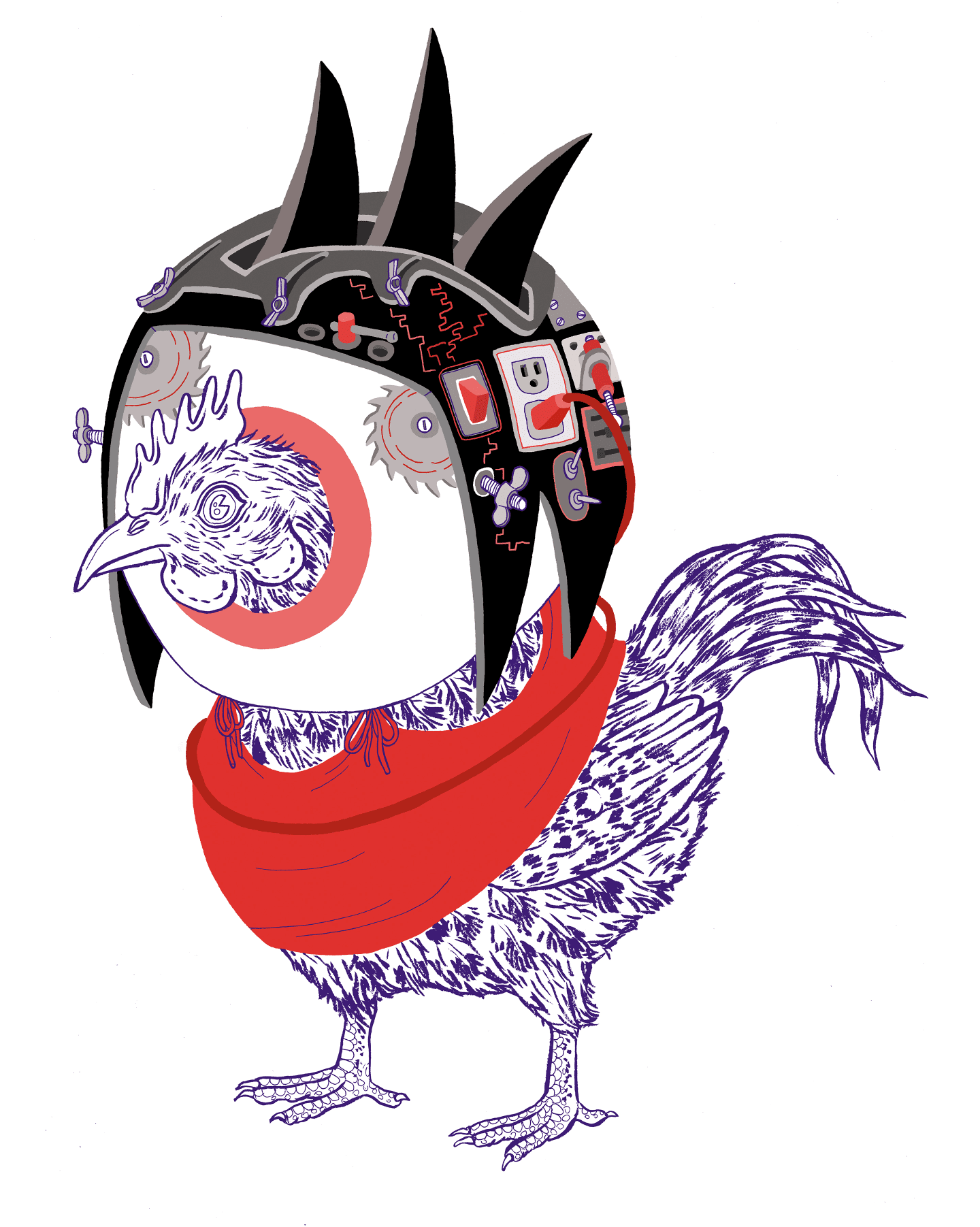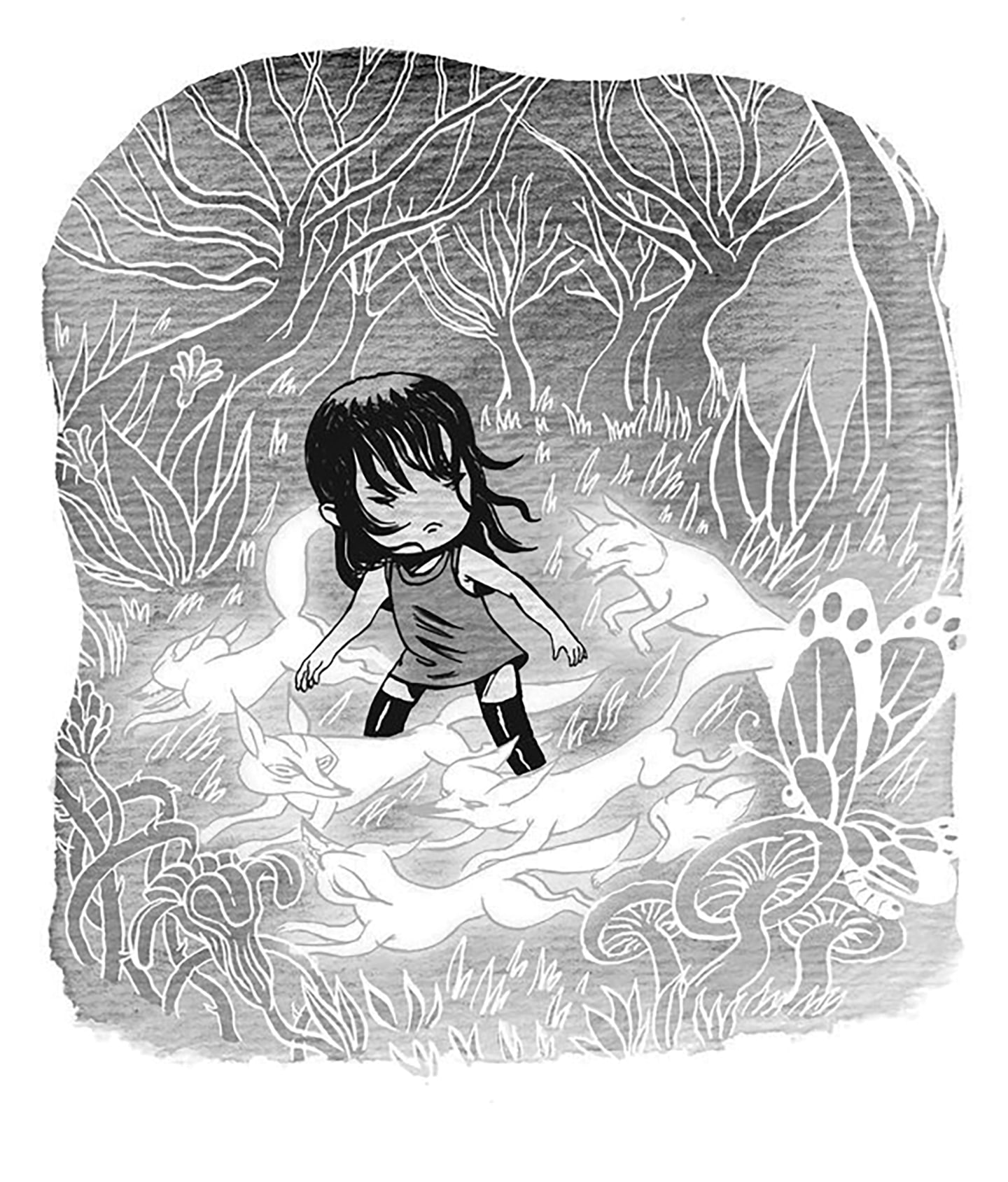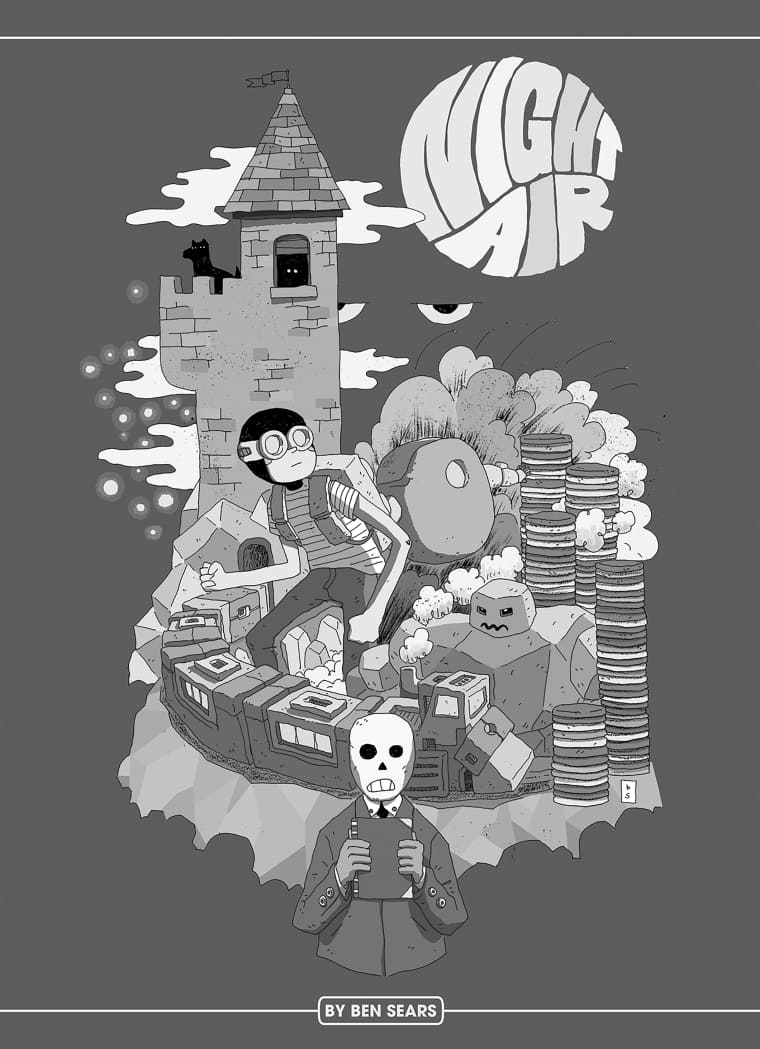How A Tiny Toronto Press Found Success Through Diversity
Koyama Press, the publishing house behind comics by artists like Michael DeForge and Jane Mai, made its name by breaking all the rules.
 Illustration by Lisa Hanawalt
Illustration by Lisa Hanawalt
The dramatic story of Koyama Press’s inception could easily be the plot of one of the poignant autobiographical comics it publishes. In 2007, after recovering from a risky operation that removed a terminal aneurysm from her brain, Annie Koyama left her career in film production, seized on the sizable nest egg she’d amassed playing the stock market while on bedrest, and launched her own independent press. “I wasn’t entirely surprised at the serious diagnosis, but I wasn’t prepared for being told to go home straight away and ‘settle your affairs,’” she recalls, speaking in an email from the company’s headquarters in Toronto. Though she’d been in poor health for some time, the surgery prompted Annie to dive into her lifelong love of print. Today she lives with a second, inoperable aneurysm, and her publishing house, which has released work by award-winning artists like Michael DeForge and Jane Mai, is widely considered one of the most important forces in independent comics.
For its first six years, Koyama Press functioned somewhat like a non-profit organization: Annie funded local artists’ ventures—street art, zines, comics—then gave them all the proceeds. An insomniac, she spent nights scouring the internet for the work of young, little-known cartoonists and gave them the opportunity to publish their comics, often for the first time. On an immediate level, Annie’s generous yet meritocratic approach validated the work of artists who were otherwise written off by the established alternative comics community, which often views this new generation of cartoonists working primarily online as somehow less legitimate. On a broader scale, her commitment to taking risks on emerging artists reflected an ongoing paradigm shift affecting the way alternative comics are produced and consumed.
 Annie Koyama by Matthew Forsythe
Annie Koyama by Matthew Forsythe
The manga boom of the ’90s significantly diversified audience demographics: the Japanese comics often featured, and were produced by, women, resulting in many characters and storylines that neither objectified nor excluded them. And because they were largely produced by Asian writers and artists, they appealed to people of color around the world, too. Subsequent democratic shifts in technology, like the rise of personal blogs and proliferation of self-publishing services, only broadened norms about who could make and read comics, with new artists effectively serving as both publisher and distributor, and connecting directly to their fans. Alternative comics were no longer defined by misanthropic, self-absorbed ruminations by men, as demonstrated by Dave Sims’ long-running sexist, homophobic Cerebus series, or the work of Chester Brown, whose misogynistic documentation of visits to brothels were presented as legitimate commentary on the sex work industry. Instead, attention shifted to a broader suite of cartoonists, like L.A.-based artist Nilah Magruder and Libyan-British artist Asia Alfasi, who experimented with looser, more expressive styles while offering thoughtful and empathetic discourse about identities and ideologies.
Koyama Press was at the heart of the movement to diversify. “We live in a multicultural society and we need more artists telling their stories well—from every background,” Annie says now. “I’d like to see the youngest kids grow up exposed to all kinds of stories.” She has published books, comics, and children’s literature that span everything from autobiography to photography, from horror to humor. Among the press’s most resonant releases are the quasi-biographical works of artists like Jane Mai, whose See You Next Tuesday features raw discussion of her mental health and her body, and of Seo Kim, whose witty Cat Person features Kim and her cat as its primary characters.
 Illustration by Ben Sears
Illustration by Ben Sears
 Illustration by Cathy G. Johnson
Illustration by Cathy G. Johnson
One of Koyama’s most visible triumphs is the career of surrealist illustrator Michael DeForge. In 2009, Annie contacted him after seeing his work online; the meeting resulted in the production of Lose #1, DeForge’s first published work. In the seven years since, he has become a multiple award-winning author, widely recognized as one of the principal cartoonists of his generation. DeForge credits Annie’s support for his success, and says that her experience outside of comics is crucial to the range of content and artists in Koyama’s catalog. “She was a comics reader, but Koyama Press didn’t start out primarily as a comics publisher, so she didn’t have that weird, insular point of view that some people who’ve spent too long in comics can develop,” says DeForge. “She didn’t have preconceived notions about what a ‘proper’ comic looked like, what a sellable one looked like, or the formats they should be printed in.”
In comics, the middle way is a narrow pass, wedged between mainstream billion-dollar superhero franchises and a traditional literary establishment that is disinterested in comics, beyond the occasional best-selling graphic novel. “We are still in an uphill battle to find a wider readership for alternative comics,” Annie says. “We reach the people who are already fans, but to have our artists become better known in larger book circles would be great.” Still, in a world that sees comic imprints flare enthusiastically to life and then disappear with rapid regularity, Koyama has succeeded by enforcing a positive pragmatism: a steady growth attained via small print runs, regular releases, and smart marketing. In the nine years since the company’s launch, Annie has modeled the scrappiness and ingenuity it takes for any artist with DIY ambitions to find success in today’s creative economy. And in her ongoing health concerns, she continues to find the ambition that originally led her to create Koyama Press. “I’m not out of the woods completely, but I choose to carry on,” she says. “I’d be lying if I said that I wasn’t motivated often by the thought of possibly having less time to do what I wish to accomplish.”